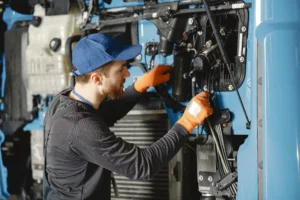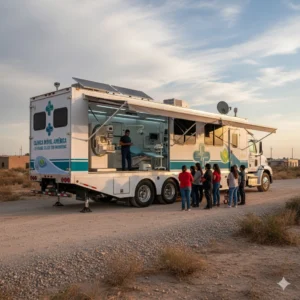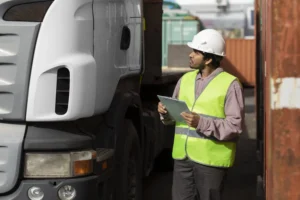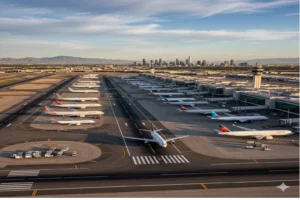Providing a comprehensive view, offering assistance, and fostering operational improvements are key objectives.
The widespread use of cameras in freight trucks has seen a significant increase by fleets, increasingly opting for the installation of both external and internal cameras in their vehicles. This practice not only supports drivers but also reduces risks, providing value beyond a mere change in behavior by drivers.
The fundamental reasons driving fleets to adopt these cameras in trucks focus on the safety of both the driver and the company. Providing a comprehensive view to understand events after an accident, offering assistance in potential legal matters, and fostering operational improvements are key objectives.
The incorporation of artificial intelligence and computer vision adds context to what happens inside the cabin and on the road, enabling real-time risk identification and alerting drivers to prevent them.
Video telematics providers offer fleet customers trend tracking in safety, managing risks more effectively. It is possible to identify the most common behaviors to manage what is most relevant; driver patterns generate responses for improving efficiency while driving.

Safety, the top priority
Safety should always be the top priority for truck drivers, and smart cameras play a crucial role as primary witnesses in case of accidents and are designed primarily to prevent them.
The latest technology in smart cameras for freight vehicles goes the extra mile in supporting companies to capture better angles, gaining new perspectives and increased operational value from video. These technologies capture behaviors that could pose risks to safety and verify that no risky actions are being taken.
Smart cameras are particularly beneficial for nighttime drivers, as they have night vision capabilities that allow recording events in low-light environments. This provides fleet owners with high-definition data valuable for assisting insurance providers in claims processes.
According to research on road safety conducted by the AAA Foundation, in conjunction with safe driving practices, smart cameras have proven to be effective, saving many lives and preventing injuries related to truck and bus accidents.

Boosting efficiency with video information
Efficiency is boosted through real-time training, with operational improvements such as fuel efficiency. Camera systems with artificial intelligence provide valuable information, such as acceleration or brake speed, depending on the environment, improving fuel performance and significantly benefiting freight truck companies.
The artificial intelligence embedded in cabin cameras provides constant information that plays a crucial role in improving driver performance, strengthening safety regulations.
By combining video metrics with engine data, safety scores, driver behavior metrics, real-time speeding assessments, and service hour records, fleets can be provided with a long-term and trainable view of each driver’s overall safety performance.
The successful implementation of cameras with artificial intelligence is not just about physical installation but also meticulous analysis of extracted data, crucial for improving efficiency in freight transportation.
This new era of data-informed communication and drivers represents a significant advancement for the trucking industry. Roads are now safer for fleets, fleet managers can fulfill their responsibilities to maintain high safety standards, and drivers also experience benefits.

World Mental Health Day: how to care for truck drivers’ mental health
As part of World Mental Health Day, we focus on caring for the mental health of truck drivers. World Mental Health Day reminds us that

Solving the shortage of diesel technicians
The role of the transport industry in combating the shortage of diesel technicians: what should be done to solve it? In August 2025, the American

Mobile Clinics: The Unsung Heroes Bringing Healthcare to America’s Highways
The drivers of these massive trailers have become the unsung heroes of America’s roads, delivering life-saving medical services to every corner of the country.

Ending CDL reciprocity: the U.S. seeks stricter measures
New bill would require states to comply with the strict CDL regulations recently established. The U.S. House of Representatives has introduced new legislation aimed at

Cargo theft costs the transportation industry $18 million in losses
Cargo theft has been one of the most persistent issues facing the freight transportation industry so far in 2025. Cargo theft has been one of

Duffy Secures $41 Million to Save Essential Air Service as Shutdown Threat Looms
U.S. Transportation Secretary Sean P. Duffy announced on Wednesday that the Department of Transportation (DOT) has secured $41 million in additional emergency funding to sustain the Essential Air Service (EAS) program, a federal initiative that subsidizes commercial flights to rural and underserved communities across the United States.
